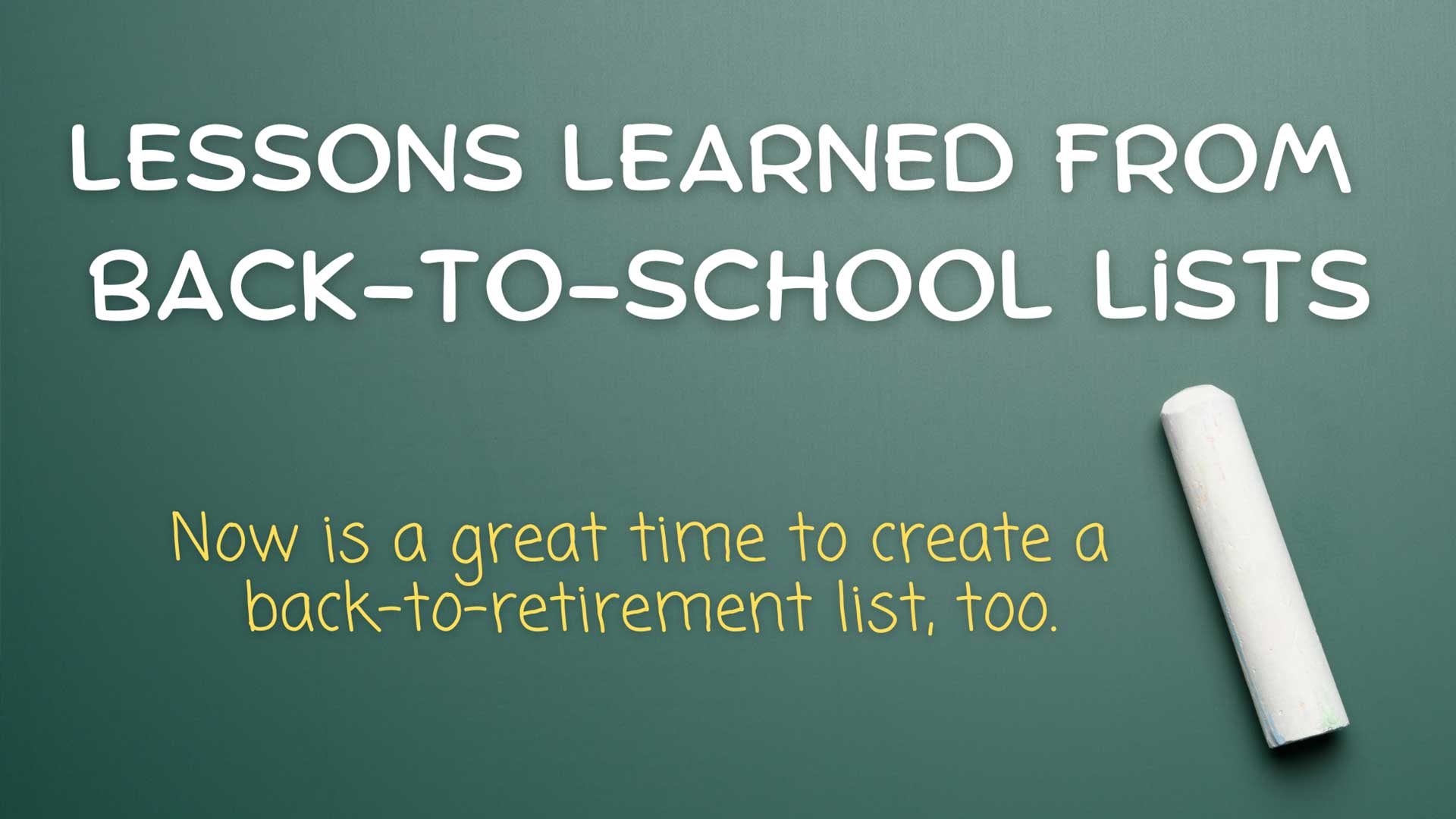Now could be a great time to create a back-to-retirement list, too.
It’s hard to believe, but soon the weather will start to turn a little cooler, college football will return and the kids will be back in school. All signs that really mark the end of summer. Gone are the late bed times, flip-flops and lazily sitting outside listening to music, or impromptu nights with the neighbors.
If you have school-age kids or grandchildren, you know it’s the start of parent/teacher conferences, emails from the school and the dreaded lists of required back-to-school items.
The Back-to-School List
Now, some of the items on the list make sense – pencils and pens and calculators all seem like they’ll get put to good use. But do they really need six different colored pocket folders and eight different color highlighters? Not just any pocket folders, but the shiny ones with two pockets. Aren’t the ones from last year, ok?
Consequently, this gets you thinking: Is all of it really necessary?
The Retirement List
As you approach retirement, whether it’s 5, 10 or 15 years out, knowing what you need is the first step to getting what you envision. Much like a back-to-school list, an annual retirement list provides an inventory of what you have and what is necessary, as you work towards your retirement.
- Review your current financial situation by assessing your income and assets versus your expenses and liabilities. Consider major expenses you will have (i.e., education) in the years ahead.
- Determine a realistic amount to contribute regularly to your employer-sponsored qualified retirement plan (e.g., a 401(k) plan), to take advantage of the company match.
- Make a real effort toward reducing your debt. Pay off the highest interest rate bills first, and your larger bills as soon as possible. Review your necessary and unnecessary expenses to curb your spending, and avoid taking on any new debt that could carry over into retirement.
- Review your life, health, and disability income insurance policies to determine the amount of coverage for your current and future needs.
- Evaluate your lifestyle now to reflect how you expect to live in retirement. That might mean downsizing your home, reducing your leisure travel, driving more efficient cars, and generally adopting a more frugal mindset.
- Determine how much income you can expect to receive in retirement from pension plans, veterans’ benefits, or Social Security. To get an estimate on your future Social Security benefits, visit www.socialsecurity.gov.
- Know your retirement expenses. Make a list of which expenses are likely to decrease after you retire (clothing, commuting, etc.) and which are likely to increase (medical, travel, etc.). Figure you will want at least 70% of your preretirement income to live comfortably.
- Speak with your Wealth Advisor to review your checklist as it changes over time, in order to evaluate if there needs to be any adjustments to your investment strategy. Ask questions. Get good advice.
Just like you prepare children for school, giving them the best chance for success, you can look ahead with confidence knowing you have what you need to achieve your retirement goals.
Copyright FMeX. All rights reserved. Distributed by Financial Media Exchange.




